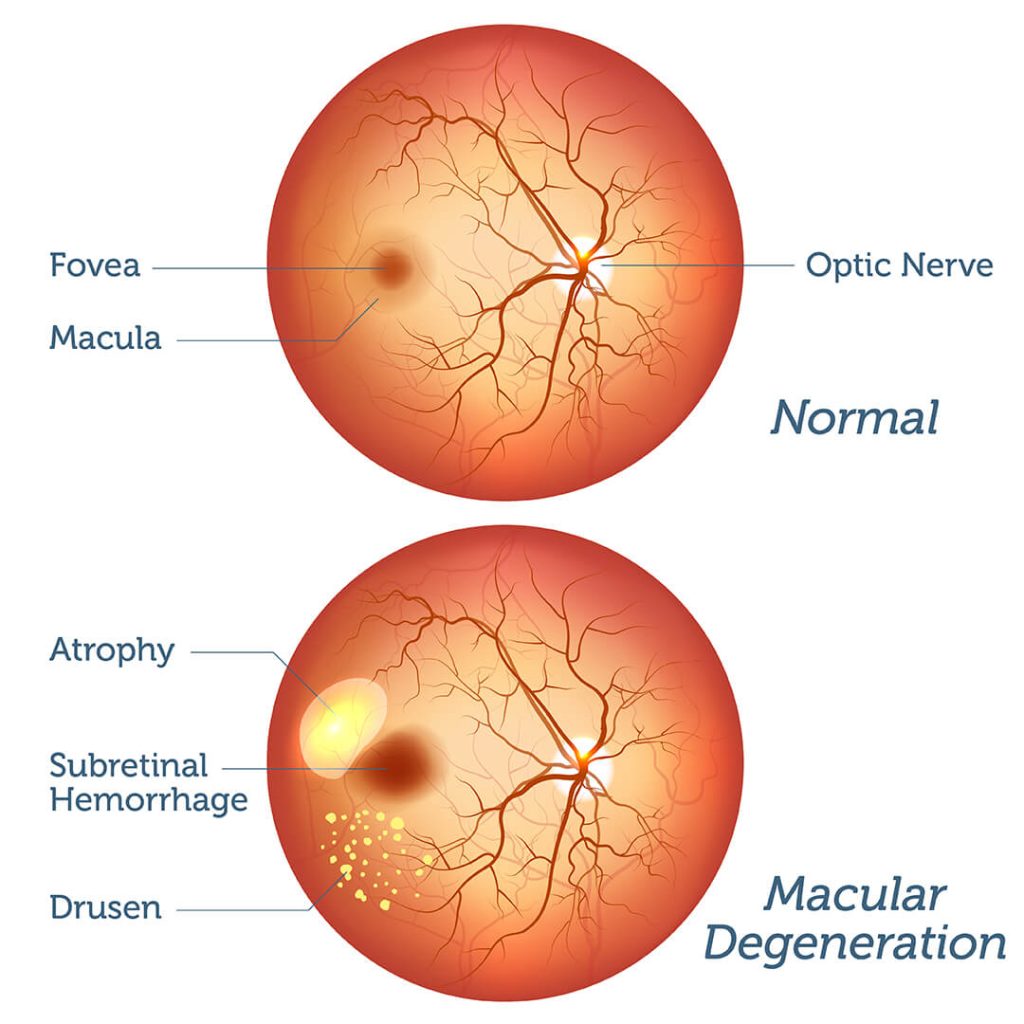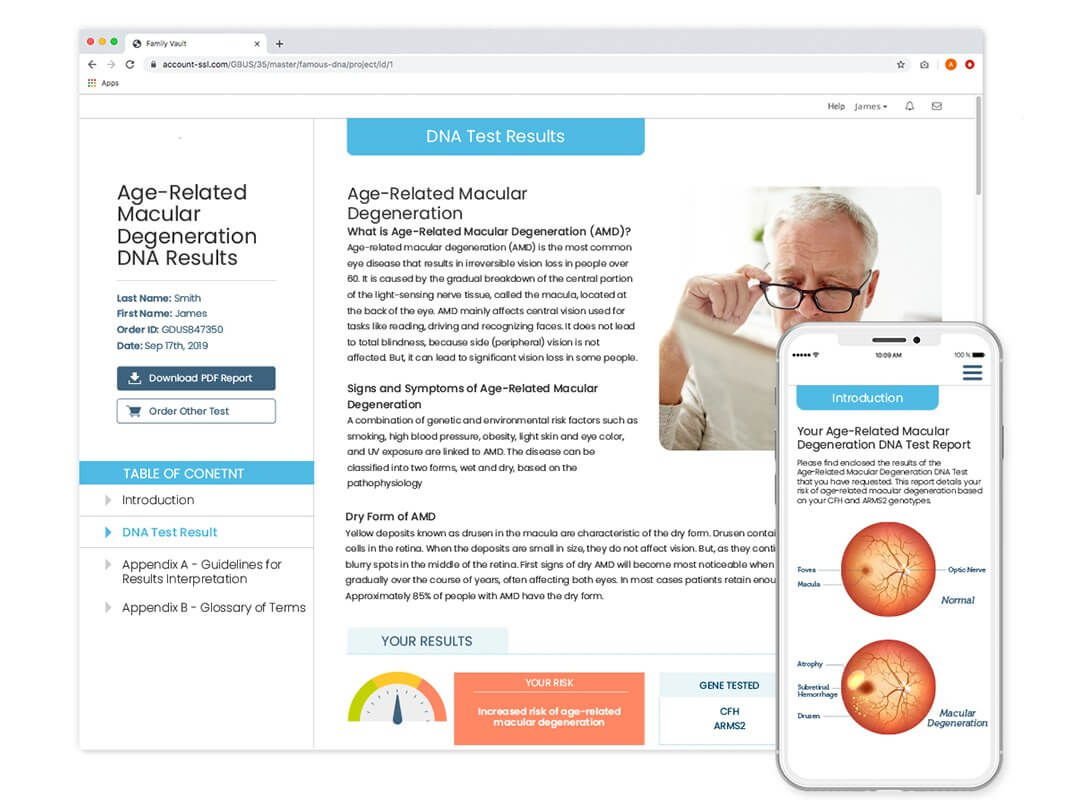Age-Related Macular Degeneration
Are you at risk of developing age-related macular degeneration? Find out with this DNA Test.
- Detects genetic variants of two genes CFH and ARMS2 linked to age-related macular degeneration
- Early detection is key to slowing disease progression and for avoiding vision loss
- 100% private and confidential online results
Already have DNA markers? Sign in and upload your data to view results.
Need to take the DNA Test? Order our easy-to-use swab kit.
Detailed Description
Age-related macular degeneration (AMD) is the most common eye disease that causes irreversible vision loss in people over 60. It is caused by the gradual breakdown of the central portion of the light-sensing nerve tissue, called the macula, located at the back of the eye.
AMD mainly affects central vision used for tasks like reading, driving and recognizing faces. As it does not affect side vision (peripheral vision), AMD does not lead to total blindness. However, the vision loss can be significant in some people.
Take this test to find out whether you are at risk. Early identification is key to slowing the progression of the disease to minimize the loss of vision.

The Genetics
Genetic variants of two genes CFH and ARMS2 cause AMD in people of European descent. The CFH gene provides instructions to make complement factor H. People with these variants make a complement factor H protein with reduced activity. The ARMS2 gene encodes a proteins involved in the clearance of waste in the retina. People with this variant make less ARMS2 protein.

Dry form of AMD
Yellow deposits known as drusen in the macula are characteristic of the dry form of AMD. Drusen contain waste products generated by the cells in the retina.
When the deposits are small in size, they do not affect vision. But, as they continue to grow, they lead to blurred vision with dim, blurry spots in the middle.
First signs of dry AMD become most noticeable when reading. Vision loss worsens over the course of years and will affect both eyes. In most cases patient retain enough vision to read and drive.
Approximately 85% of people with AMD only have the dry form.
Wet form of AMD
Wet AMD is characterized by the growth of new abnormal blood vessels under the retina in a process called choroidal neovascularization (growth of new blood vessels).
These abnormal blood vessels release blood and fluids into the eye, leading to vision distortion and when untreated formation of scars.
Initial symptoms of wet AMD include distorted vision such as a central blind spot or curving of straight lines. Scaring will ultimately lead to permanent loss of central vision.
Even though wet AMD is the less prevalent form (accounting to about 15% of the cases), a majority of patients with wet AMD (80-90%) will experience serious vision loss.
How It Works
Step 1: Sign up for a free Genebase account.
Step 2: Upload your DNA markers to Genebase.
Step 3: Login to your account to access your results when they are ready.


